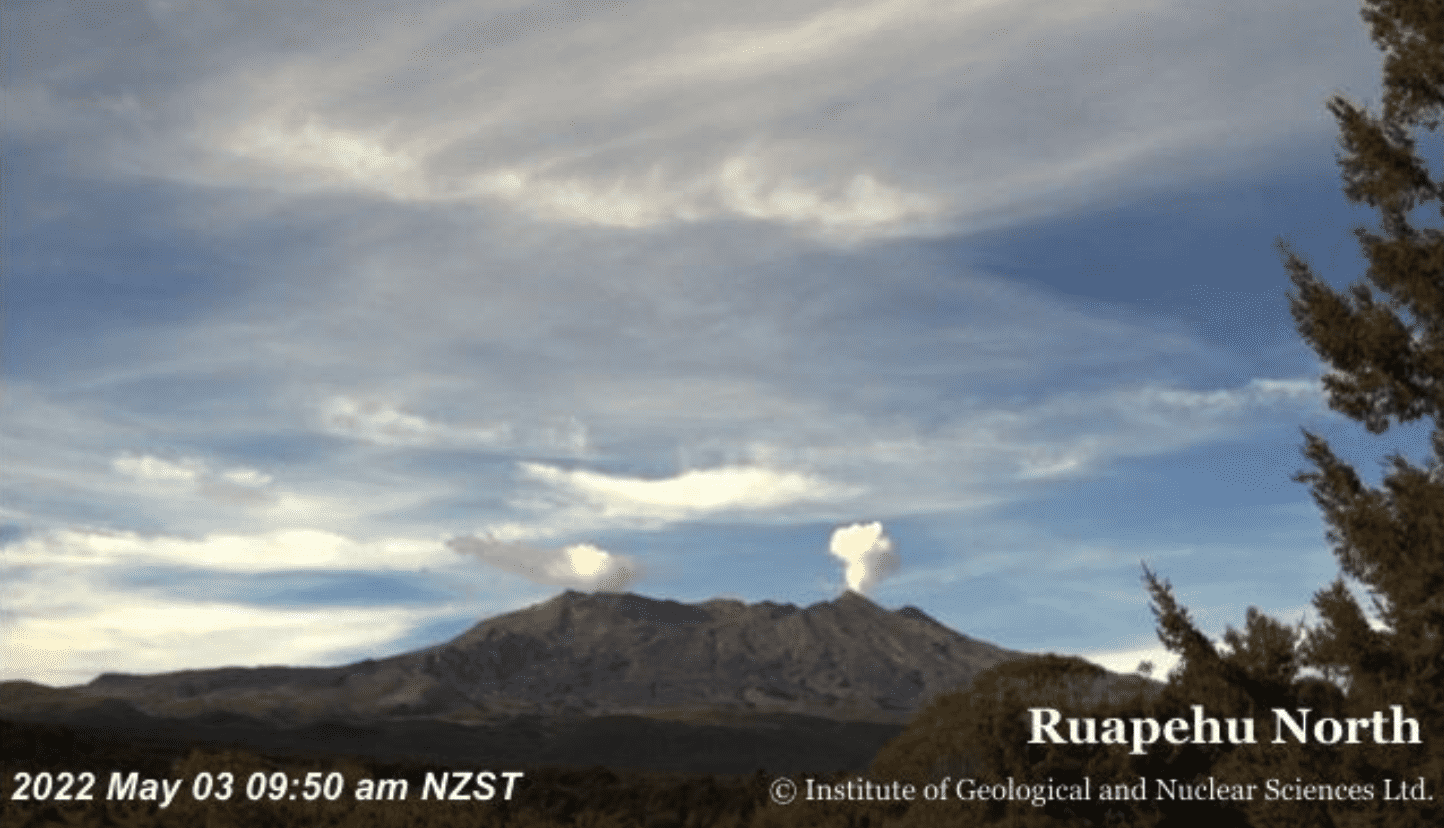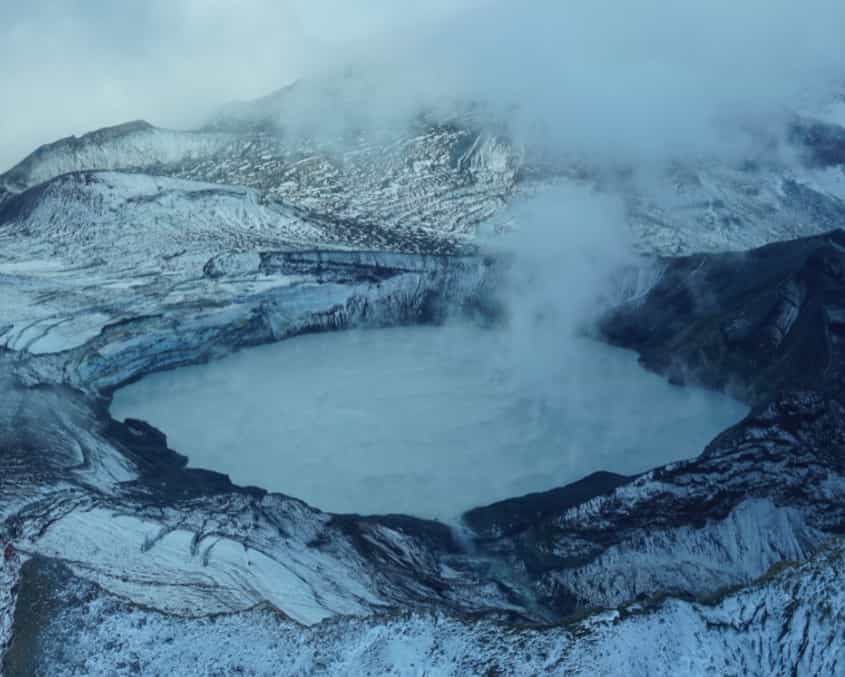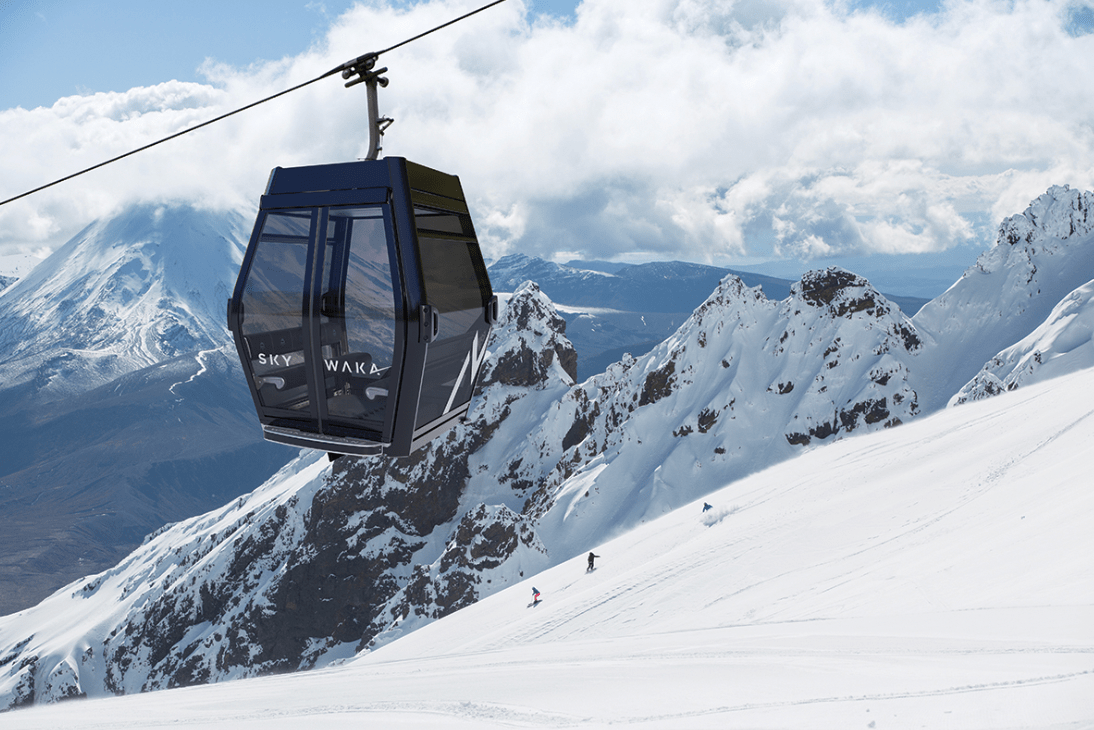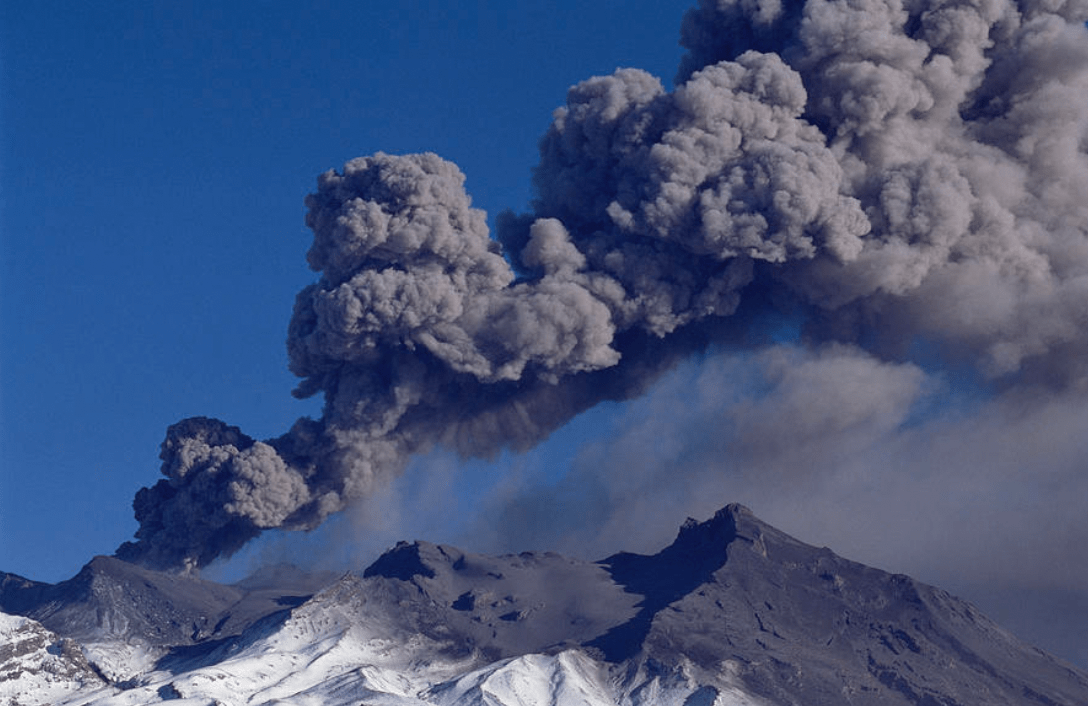
Six weeks of raised seismic activity at New Zealand’s Mt. Ruapehu resulted in the strongest tremor in twenty years yesterday, sending plumes of steam into the air. Despite the increased activity, the volcano remains under a Level Two Alert. There will likely be no eruption or a minor eruption confined to the lake basin within the next four weeks.
Over the past six weeks, Mt Ruapehu has exhibited the strongest volcanic tremor in two decades along with a rise in Crater Lake (Te Wai ā-moe) temperature. This period of heightened volcanic unrest continues. Over the last week, the level of volcanic tremor has varied, with bursts of strong tremor interspersed by short, periods of weaker tremor. This represents a change in character in the tremor, and the driving processes remain unclear.
The last three days has seen Crater Lake temperature rise to 38 °C following a four-week period at 36-37 °C. Our modelling suggests that to maintain the lake temperature and subtle rise requires ~200-300 MW.
Due to the heightened volcanic unrest, GNS Science staff are carrying out more frequent aerial gas measurements and Crater Lake sampling. A gas measurement flight on 28 April recorded the sixth highest sulphur dioxide (SO2) flux of 390 tonnes per day since 2003. Sulphur dioxide is a strong indicator gas and is derived from a relatively shallow magma body, which is perceived to currently exist a few kilometres beneath Crater Lake. Further gas flights will be conducted when weather conditions are suitable.
– Geonet

The steam plume was visible above Mt Ruapehu’s Crater Lake. The first sign of the plume occurred at ~09:45 am, and it ascended slowly to ~1-mile above the summit area, remaining visible until around 10.30 am.
Mt. Ruapehu Ski Resort is one of the Southern Hemisphere’s most unique resorts. Its unique location is nestled among the jagged slopes of the very active namesake volcano, Mt. Ruapehu. The resort features exhilarating terrain composed of solidified lava, offering a unique skiing experience.
Located on New Zealand’s North Island, the volcano is the highest point on the island at 9,176 feet. The resort features two separate ski areas, Whakapapa and Tūroa, one located on the northern slope of the volcano and the other on the southwestern side. The resort is known for skiing in the winter but remains open during the summer offering activities like hiking and sightseeing.

As the resort’s summer season is coming to an end and it’s preparing for the ski season, Mt. Ruapehu has something brewing under its crater. Recent signs of unrest have been reported in the form of tremors and rising temperatures at Crater Lake. Experts say this is cause for concern for a potential eruption and for the resort. Mt. Ruapehu is currently classified under a Level Two Volcanic threat. While an eruption may not be in the forecast, consistent signs of eruptive potential continue to be recorded.
What does this mean for Mt. Ruapehu Ski Resort? This isn’t the resort’s first time navigating Mt. Ruapehu’s eruptive potential. In September 2007, while under a similar Level Two Volcanic Alert, Mt. Ruapehu let loose. Magma flooded the lahars that make up many of the runs around the resort. Rock, debris, and hot ash filled the air and cluttered an almost two-mile radius around the crater. Luckily, there wasn’t any significant damage or loss of life.
While its namesake could potentially put a significant damper on the upcoming ski season, there isn’t any immediate threat to the area. The resort will continue to offer summer activities, including hiking and scenic gondola rides on the Sky Waka. The Skyline Walk, a scenic hiking trail, is closed to visitors per the Level Two Volcanic Alert. It’s also recommended that visitors avoid spending extended periods in hazardous prone areas, including lahars.
If an eruption is detected by the Ruapehu Eruption Detection System (REDS), the resort has protocols to warn guests to clear susceptible areas. The REDS will send an automatic signal to the Whakapapa Ski Area Lahar Alert and Warning System (WLAWS) if seismic activity is detected. The WLAWS will then produce a siren and direct guests to take cover on high ground and clear the area.
As of right now, resort operations will continue to move forward. Summer activities and tourism will continue until the Volcanic Alert Level increases with potential eruption concerns. The resort plans on opening its two ski areas on July 7th and 8th. In the meantime, the GNS and DOC will monitor Mt. Ruapehu for persistent symptoms of impending eruptions.
